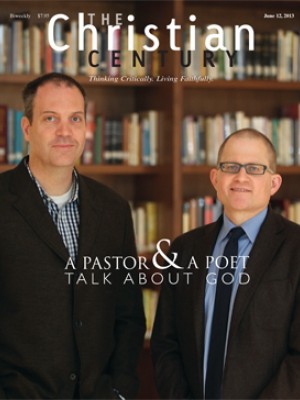Congregations tend soil and soul with gardens
Morris G. Henderson wasn’t sure what do with a vacant block of land behind his 31st Street Baptist Church in Richmond, Virginia. The church had purchased the plots but didn’t have the funding for the family life center that they had planned to build.
Then he had a vision. “Why not build a garden and people can learn to be self-sufficient and we can grow food?”
With an 80-year-old church member heading the project, the congregation planted its first garden in 2008: watermelons, tomatoes, okra, squash, strawberries and blueberries.
By the second year congregants were getting guidance from the Virginia Cooperative Extension; this year, the church has at least two dozen raised beds, with the bulk of the harvest used in the church’s soup kitchen.
The nutrition program serves 250 people in the summer when kids don’t have access to school lunch programs, Henderson said. Lunches are also available for congregants, food program participants and community members, for a donation. A flower garden provides flowers for the sanctuary.
Read our latest issue or browse back issues.
A growing number of congregations throughout the country are raising fruits and vegetables for soup kitchens and food pantries in what are often called food justice programs; in some synagogues they’re known as mitzvah gardens.
The gardens serve several purposes. In addition to providing fresh food to those who need it, the gardens are educational tools. They increase awareness of land sustainability, teach congregants about farming and remind them of religious imperatives to care for the land.
Chicago’s KAM Isaiah Israel synagogue has one of the largest gardens. Its food program is supported by gardens in its own yard as well as those of two nearby churches.
The food program began in 2009 when Robert Nevel, the synagogue’s social justice coordinator, and a group of volunteers created a vegetable garden in the shape of a six-pointed Star of David.
The congregation then planted a second vegetable garden and an herb garden on other sides of its 1923 building, which sits across the street from the Hyde Park home of the nation’s gardeners-in-chief, President and Michelle Obama.
In 2011, with a grant from the community group One Chicago, One Nation, KAM helped Kenwood United Church of Christ establish its garden, and last year it assisted St. Paul and the Redeemer Episcopal Church in creating one.
“We think of all the gardens in the neighborhood as one farm for purposes of plant rotation and harvesting,” Nevel said. “Together, we remain a network for the harvesting and distribution of the food.”
The produce is distributed to six different hot-meal programs, four of them affiliated with houses of worship and all of them within a mile and a half of KAM, Nevel said.
Last year, through the combined 5,000-square-foot-plus gardens, KAM’s food justice and sustainability program donated 4,500 pounds of produce. This year’s plantings include six or seven varieties of tomatoes, collards, kale, chard, squash, okra, lettuces, carrots, peas, pole and bush beans, radishes, herbs, onions, cucumbers and peppers.
“We are probably the sole source of fresh food for four or five months of the year for a significant number of people in Chicago,” Nevel says.
At Chicago’s Living Room Cafe, a nonprofit that provides dinners twice weekly and breakfast on weekends, chef Royal Green calls the produce a “big plus. They’re saving us a lot of money; it’s fresh and it’s more nutritious” than canned goods, he said. “The synagogue doesn’t own that land, the church doesn’t own that land, no one really owns it; we need to be stewards of the land.”
Nan Onest, the pastoral associate at Holy Name of Jesus Catholic Church in Cedar Lake, Indiana, says, “Some of the key principles of Catholic social teaching speak to the importance of caring for God’s creations.”
The Catholic congregation, which donates its harvest to shut-ins, as well as to a local soup kitchen, a food bank and a home for unwed mothers, more than doubled its garden from 1,300 square feet last year to 3,000 square feet this year. The number of volunteers also has tripled.
“It’s been an amazing experience,” says Anita Torok, the garden’s organizer. “Some like the spiritual solitude of seeing the plants grow and working with soil. Some like the family experience; a grandmother brings her grandchild and they hunt for the food to harvest. Some like the sense of purpose, they’re involved with a good cause.”
Organizers at all the gardens say it’s not just congregants who volunteer to do the farming but members of the larger community.
“The thing I feel most proud of about the garden is that a true marker and measure of a buy-in by our community is we have no fence around our garden. People watch it and keep us from being robbed blind,” Henderson, of Richmond, said. “The community has allowed us to keep our garden for the needy.” —RNS
This article was edited on May 31, 2013.





